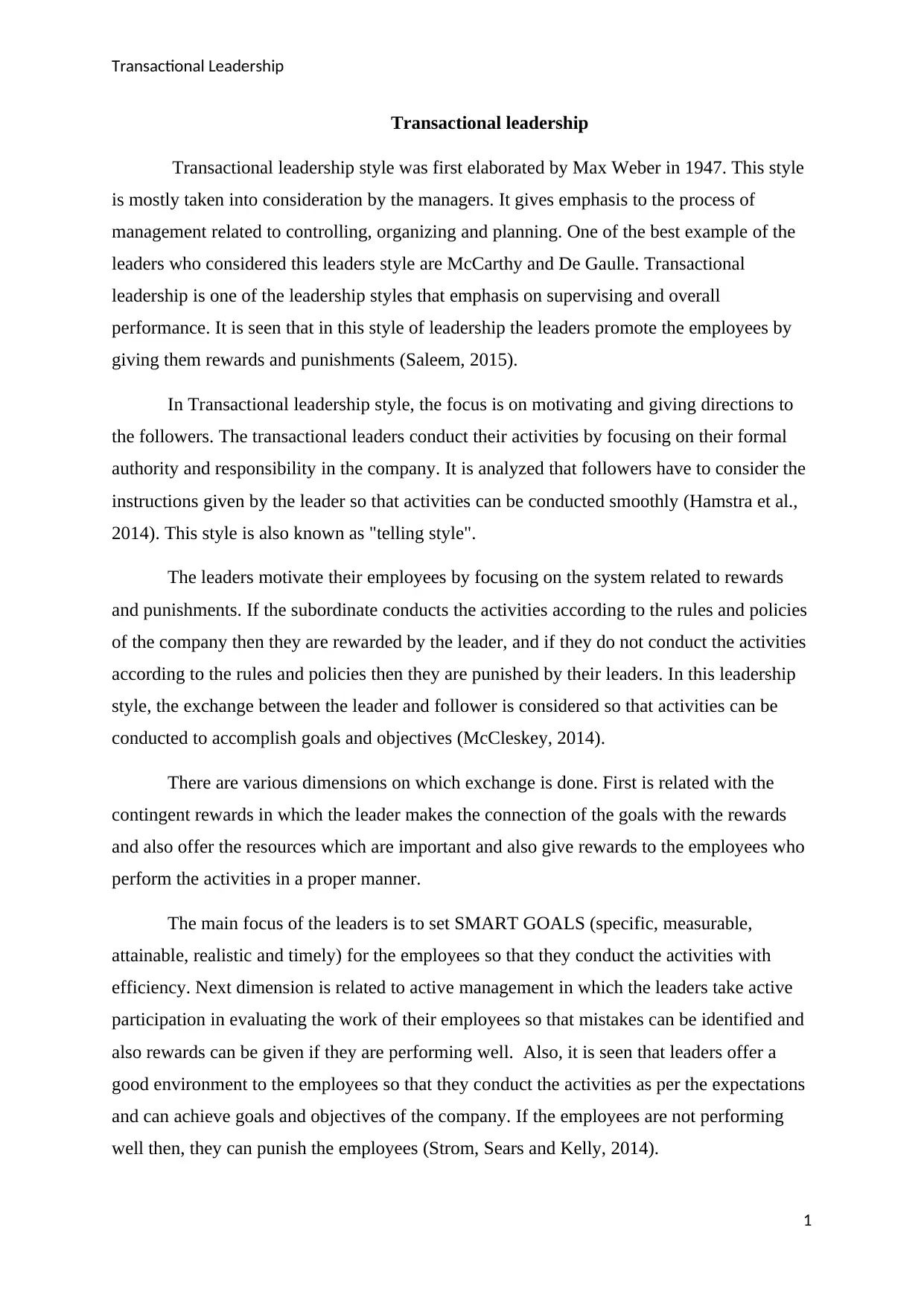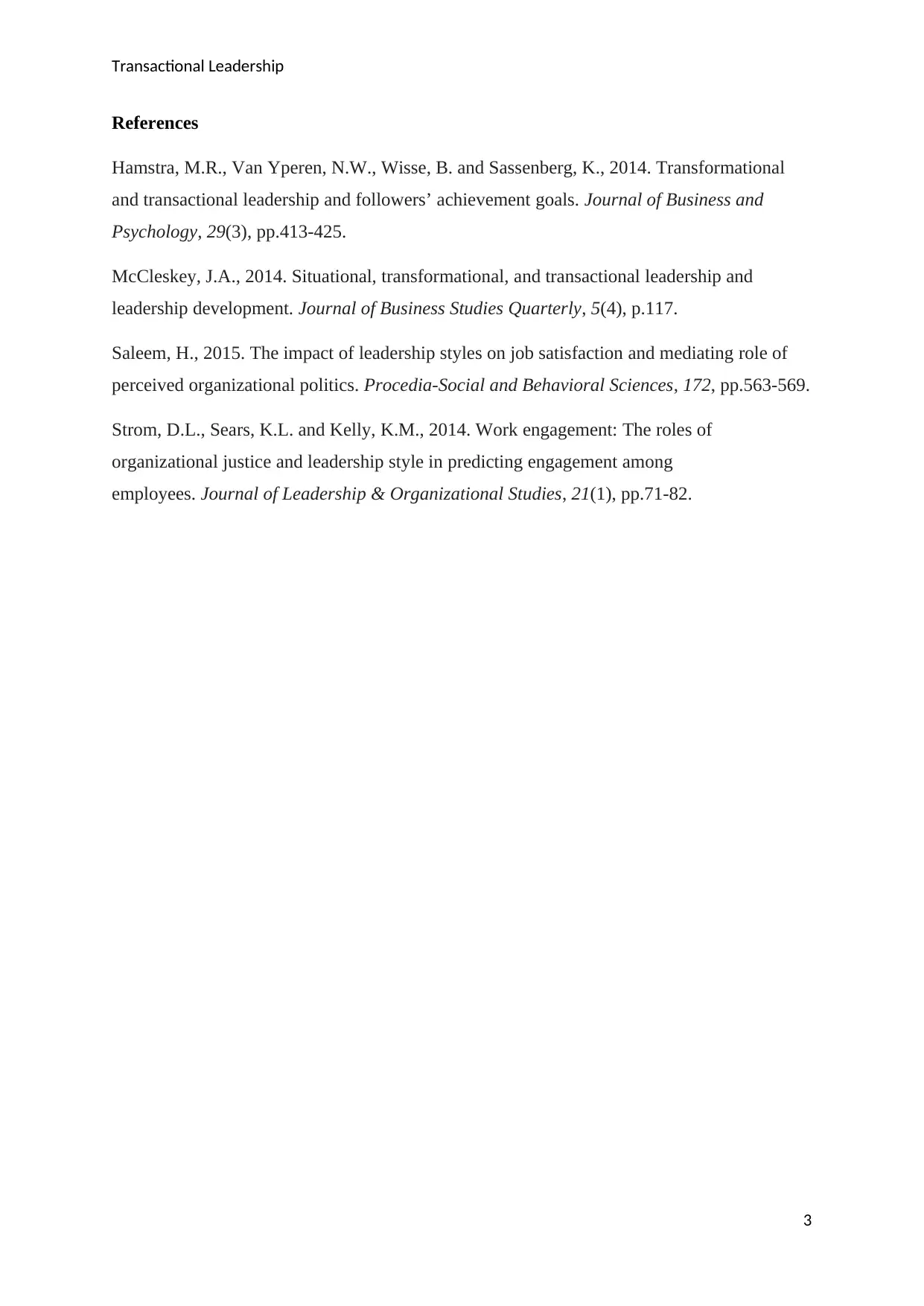Detailed Analysis of Transactional Leadership Style in Business
VerifiedAdded on 2023/06/12
|4
|702
|193
Essay
AI Summary
This essay provides a comprehensive overview of transactional leadership, a management style characterized by its emphasis on supervision, performance, and the exchange between leaders and followers. Originating from Max Weber's work, transactional leadership focuses on controlling, organizing, and planning, often employing a system of rewards and punishments to motivate employees. The essay discusses key dimensions such as contingent rewards and active management, highlighting how leaders set SMART goals and monitor employee performance. It also examines the underlying assumptions of this leadership style, particularly the belief that employees are primarily motivated by rewards and the expectation that they will follow directives to achieve organizational goals. The provided references offer further reading on the subject, enhancing the reader's understanding of transactional leadership within business contexts. Desklib offers a range of solved assignments and study resources for students.
1 out of 4









![[object Object]](/_next/static/media/star-bottom.7253800d.svg)